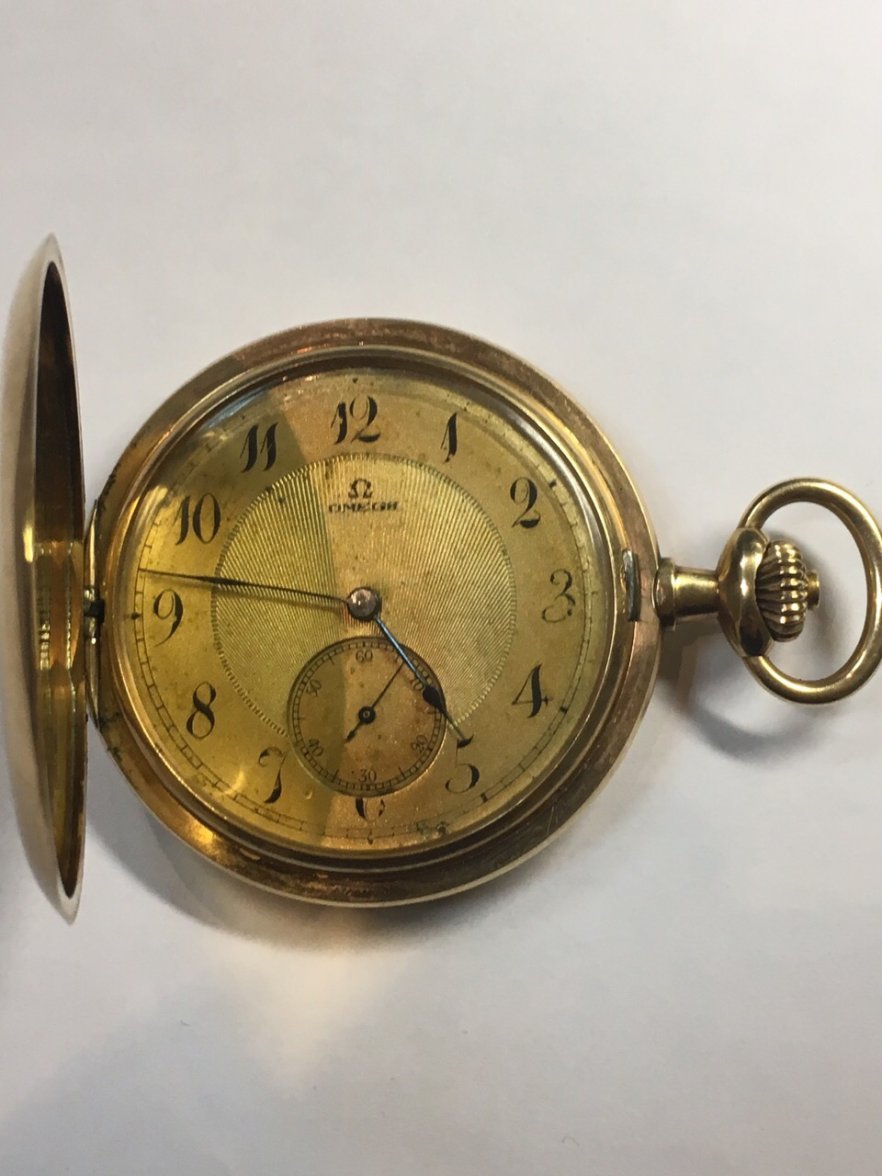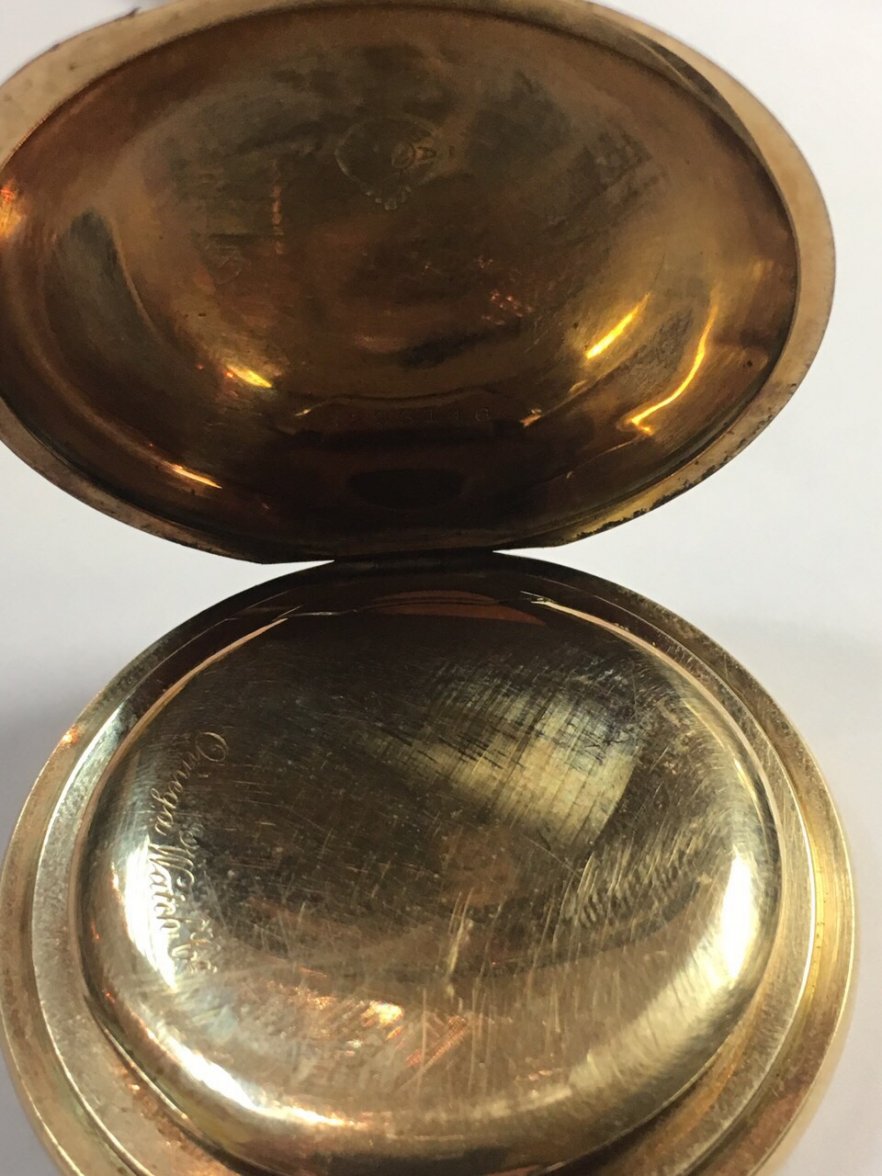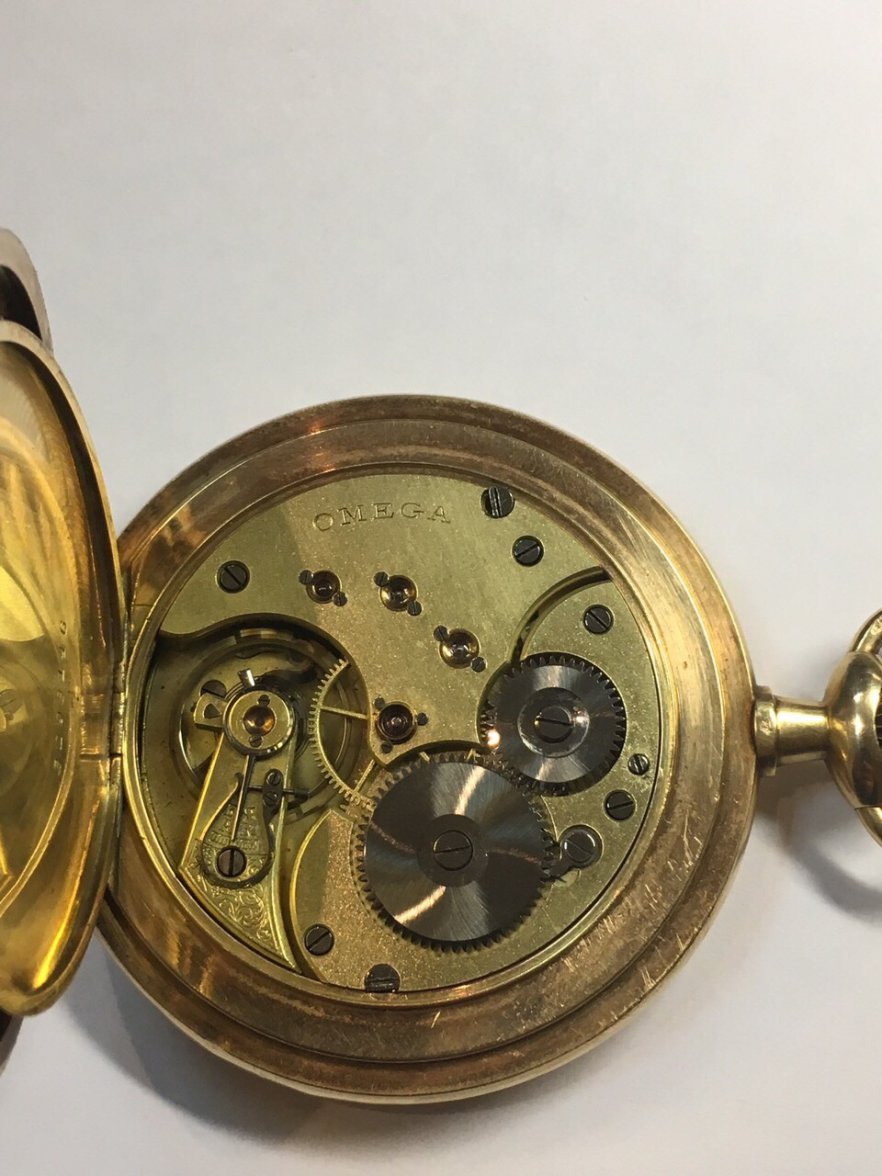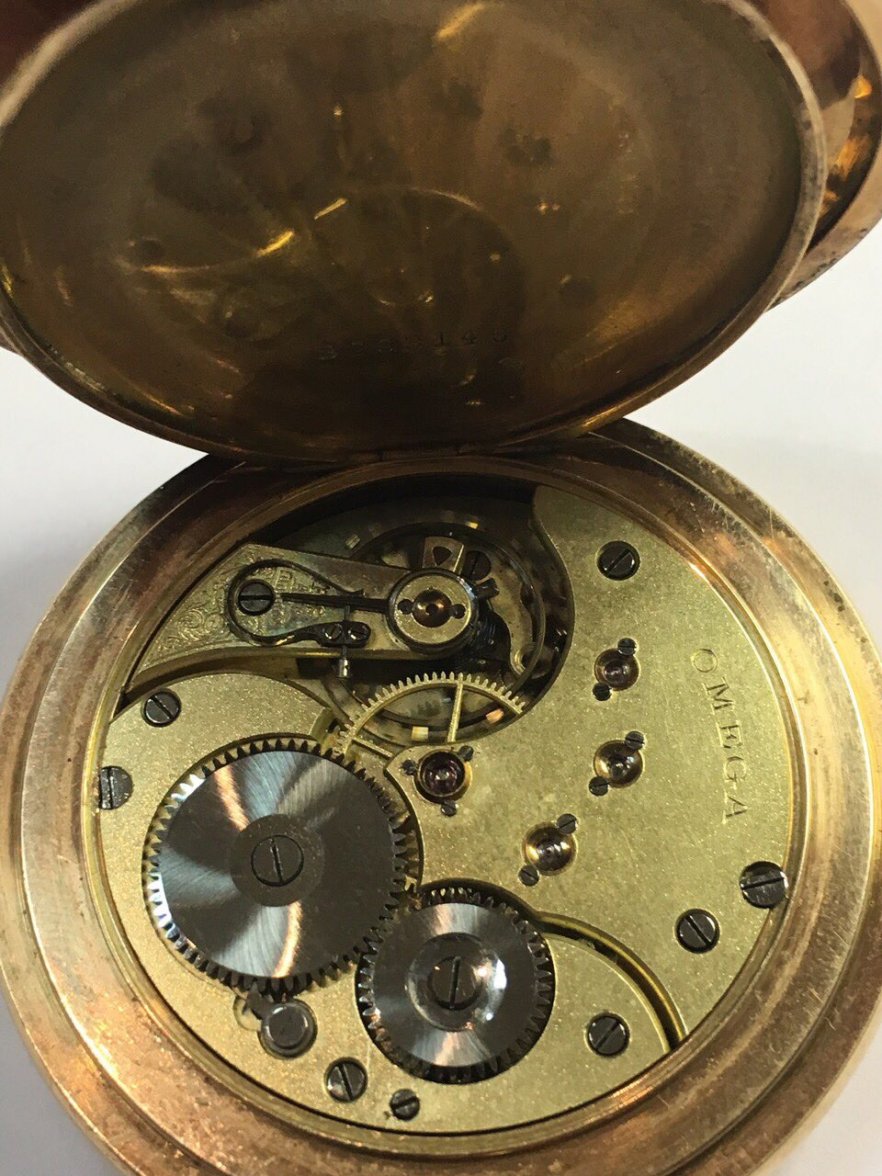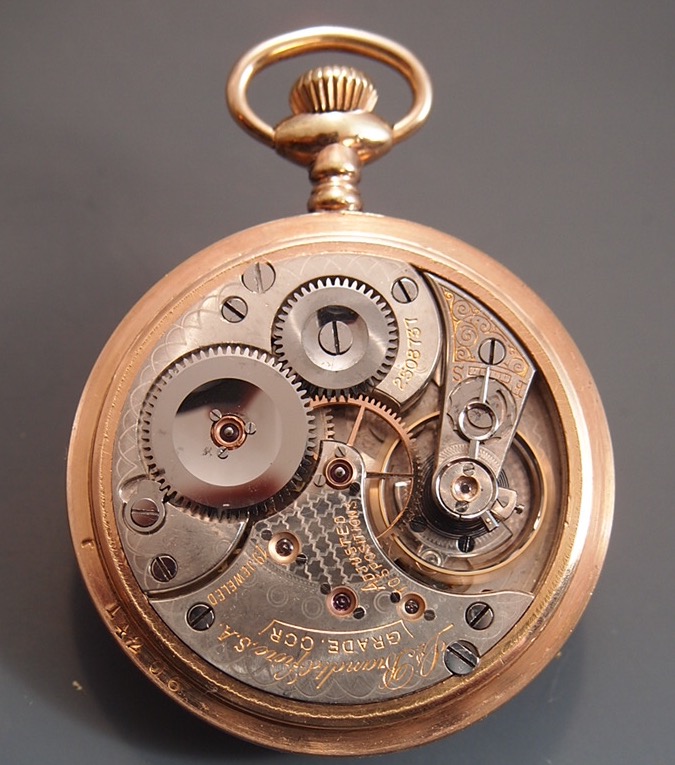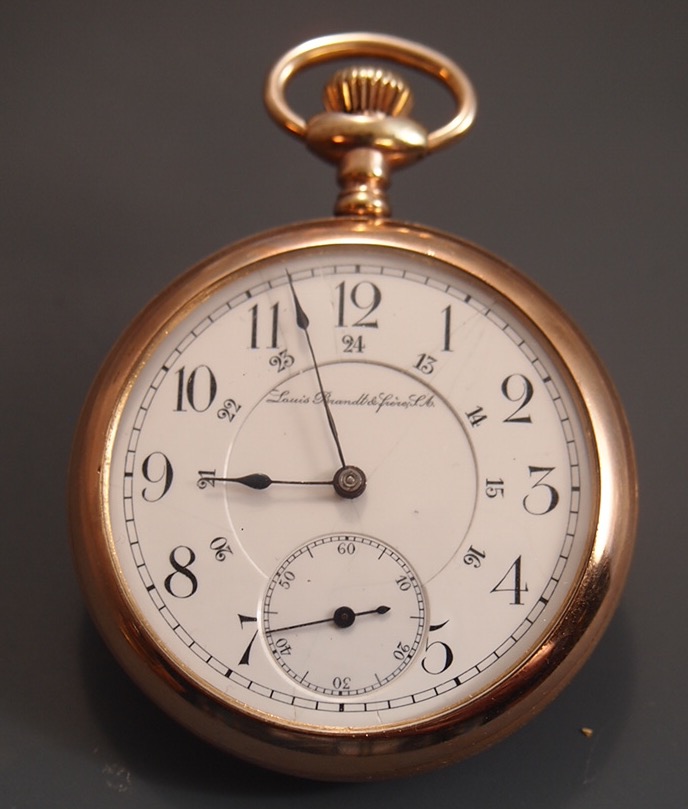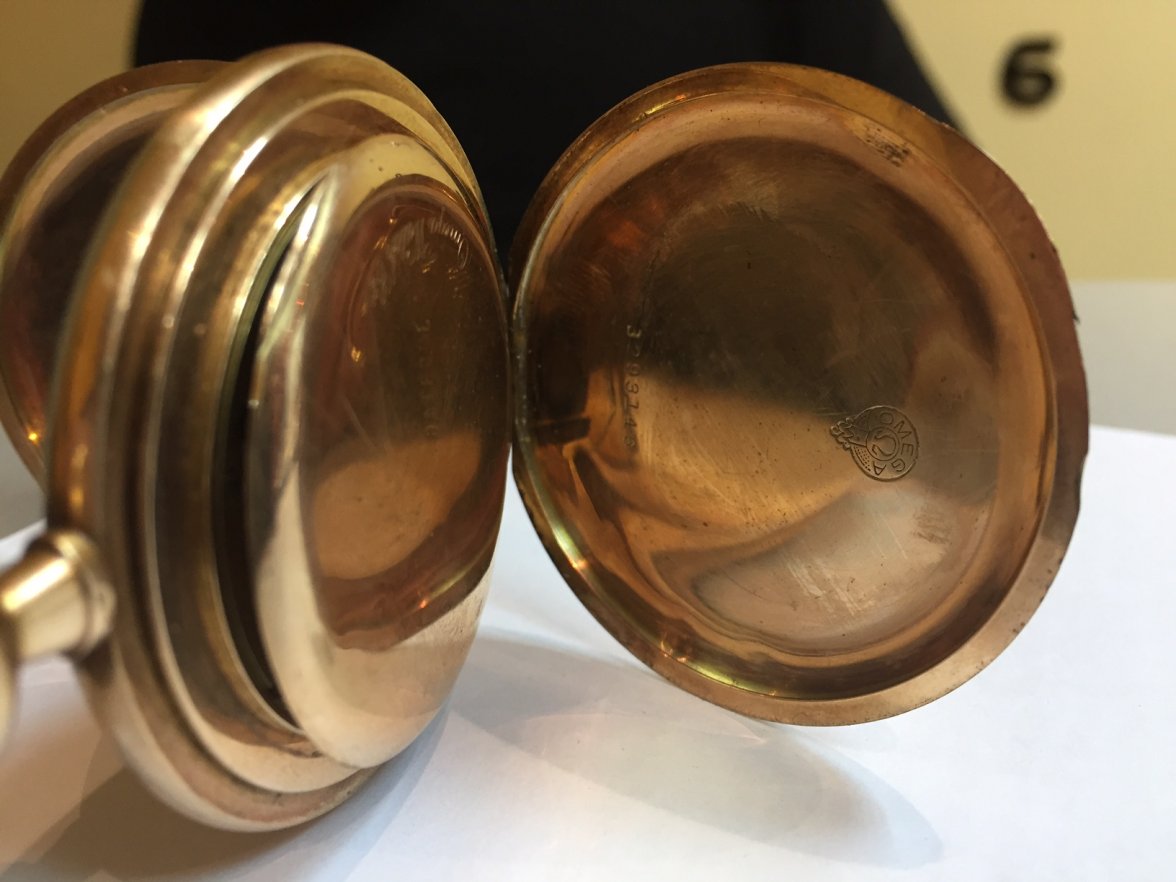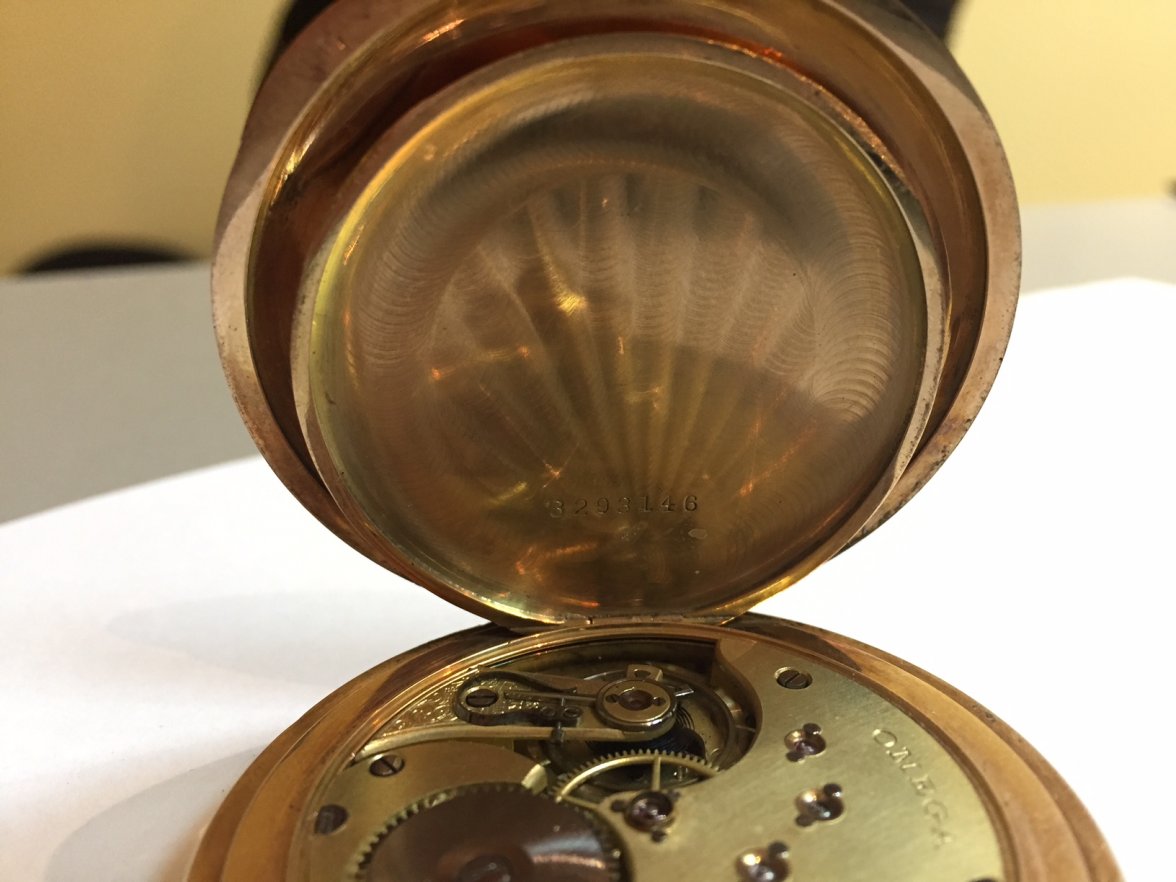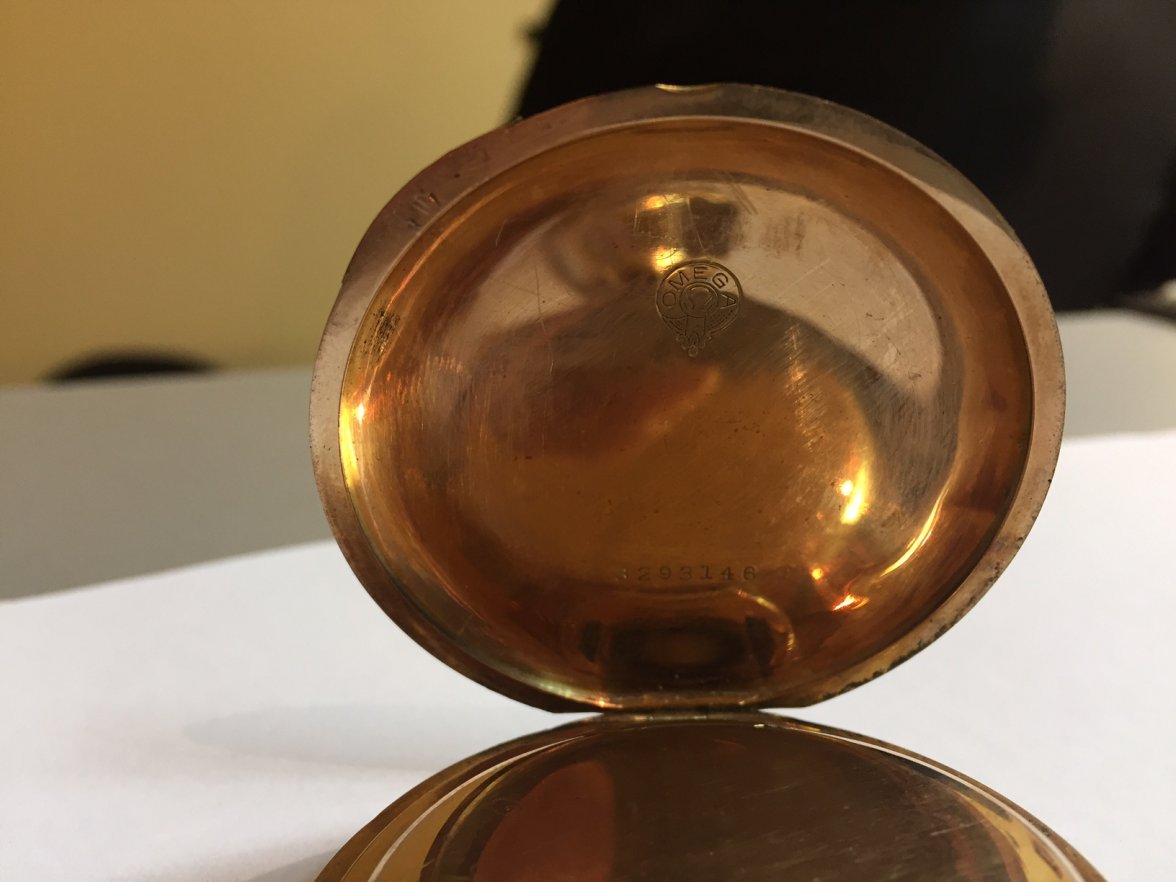Gold Omega pocket watch
TexOmega
·I can confirm to you that this is, indeed, a pocketwatch.
myk11
·Thanks anyway
Canuck
·This movement was produced in grades from 7-jewels in open faced (and possibly hunter) styles, with a standard regulator, to examples such as yours. I don't recall seeing this model with more than 17-jewels such as yours has. Yours has the micrometer regulator. Unfortunately, not much can be said of the case since your pictures don't show a good view of the inner cover quality marks. I don't know if the Omega was produced in railroad grades behind an Omega dial, but basically this same movement in 19 and 23-jewels were produced for railroad use behind Louis Brandt & Freres dials. The 19-jewel, 16-size version was grade CCR, and and CCCR WITH 23-jewels. The 19-jewel version in 18-size, it was the DR. The 18-size, 23-jewel version was DDR. I think I see a semblance of a serial number around the circumference of the crown wheel, but the lighting is such that I am unable to read it. My guess is that the watch would be circa 1910 to 1920. If you tell us what is stamped within the covers, we might be able to comment on the case. Disregard any scratched repair numbers.
I have two of the Brandt CCR versions, one of which I have shown. Basically the same movement, marked so it was approved for railroad use.
I have two of the Brandt CCR versions, one of which I have shown. Basically the same movement, marked so it was approved for railroad use.
Fritz
·This movement was produced in grades from 7-jewels in open faced (and possibly hunter) styles, with a standard regulator, to examples such as yours. I don't recall seeing this model with more than 17-jewels such as yours has. Yours has the micrometer regulator. Unfortunately, not much can be said of the case since your pictures don't show a good view of the inner cover quality marks. I don't know if the Omega was produced in railroad grades behind an Omega dial, but basically this same movement in 19 and 23-jewels were produced for railroad use behind Louis Brandt & Freres dials. The 19-jewel, 16-size version was grade CCR, and and CCCR WITH 23-jewels. The 19-jewel version in 18-size, it was the DR. The 18-size, 23-jewel version was DDR. I think I see a semblance of a serial number around the circumference of the crown wheel, but the lighting is such that I am unable to read it. My guess is that the watch would be circa 1910 to 1920. If you tell us what is stamped within the covers, we might be able to comment on the case. Disregard any scratched repair numbers.
I have two of the Brandt CCR versions, one of which I have shown. Basically the same movement, marked so it was approved for railroad use.
SUUUUURE!!! Drag the CCR out and run it under our noses again! Damn I wish I could find one of those!
Canuck
·Sorry! I love to show it. I have another which is not as photogenic. It is a private label for jeweller A Logan of Greenwood, British Columbia. The odd one shows up on on-line dealer websites. I find it hard to believe what they ask for these! Not too many around.
Edited:
Fritz
·It sure is nice to look at, please tell me you wear it once in a while (lie if you have to)
I hate stuff like this hiding away unused!
I hate stuff like this hiding away unused!
Canuck
·I don't recall ever having actually worn it! It is a beautiful runner, it would probably still perform to railroad standards. When I wear a pocket watch, it is usually a 992B with melamine dial, and stainless steel case. But my watches do get wound and set, and displayed as often as I am able.
myk11
·Canuck
·I don't see any stampings that indicate that this is a solid karat gold case. So I would say that the case is gold filled.
